Twenty-five years ago, director Park Chan-wook risked jail to make a movie about friendship between North and South Korean soldiers, striking box office gold and beginning his actors’ ascent to global stardom.
Relations between the two Koreas have since plunged, with Pyongyang renouncing its long-held goal of unification and last week destroying a venue that traditionally hosted reunions of families separated by decades of divisions.
Park said his smash hit Joint Security Area still strikes a chord a quarter of a century later.
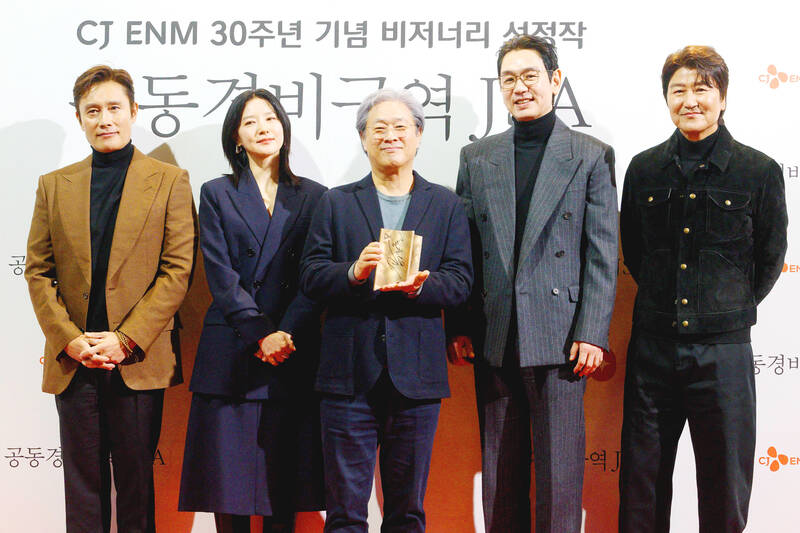
Photo: AFP
“It is a sad reality that this movie’s themes still resonate with the younger generation,” he told reporters in Seoul this month.
“I hope that by the 50th anniversary, we will be able to discuss it as just a story from the past.”
The film is widely regarded as a masterpiece of South Korean cinema and its cast members have gone on to wider success, including Squid Game actor Lee Byung-hun and Song Kang-ho from Oscar-winning Parasite.
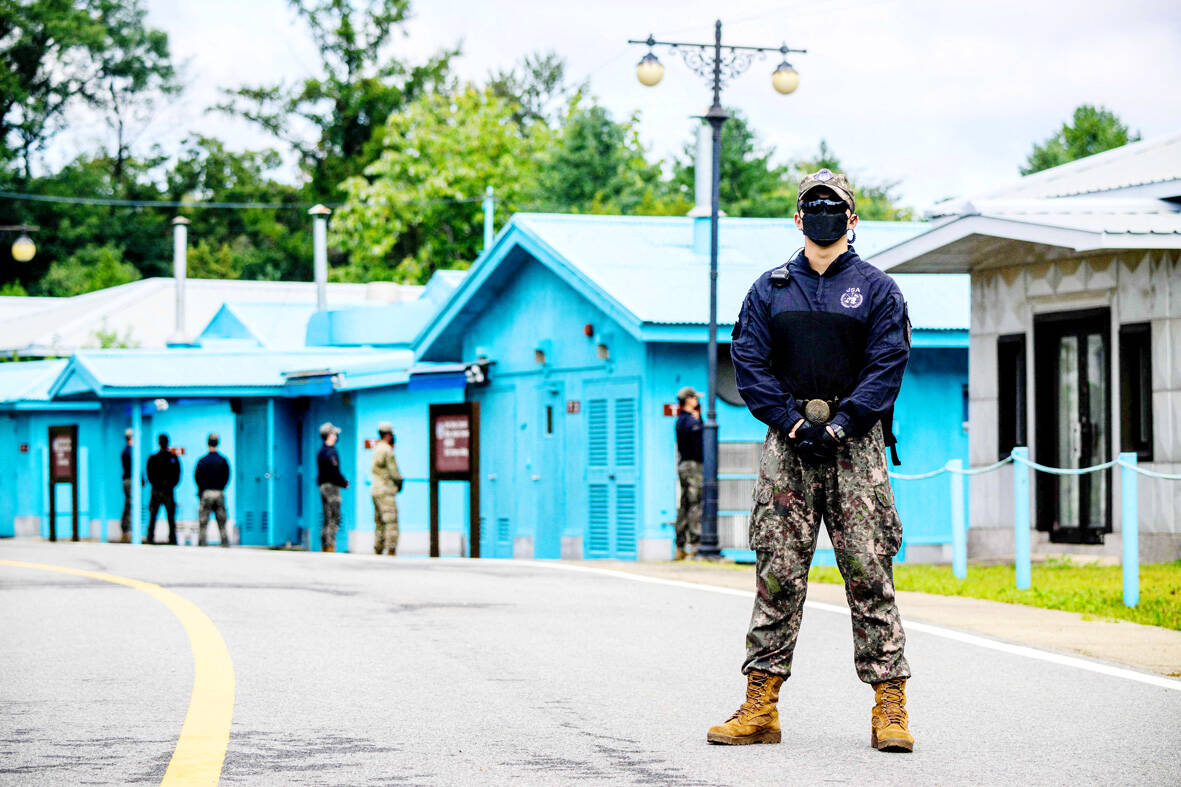
Photo: AFP
But when he set out to make it, Park — best known today for action thriller Oldboy and mystery romance Decision to Leave — was far from a prominent director. His first two feature films flopped. Desperate for success, Park delved into one of the most sensitive topics: the decades-long division of the Korean peninsula.
At the time, Park feared that his tale of inter-Korean bonding could fall foul of laws banning the “glorification” of the communist-run North.
“We prepared ourselves” for the prospect of being jailed, he told reporters.
SMASH HIT
But history was on his side.
Three months before the film’s September 2000 release, then-South Korean president Kim Dae-jung held a historic summit with his North Korean counterpart Kim Jong Il in Pyongyang.
Against the backdrop of that reconciliation, Joint Security Area swept almost all domestic film awards that year. It was also nominated for best film at the Berlin film festival and became South Korea’s highest-grossing movie up to then.
Actor Lee, now one of South Korea’s biggest stars, said he was so thrilled by its success that he watched it 40 times in the cinemas to see the audience reactions.
Local media even reported that Kim Jong-il — a known film buff — had seen it.
The film is set in the eponymous Joint Security Area, located inside the Demilitarized Zone, the 250-km-long strip of land that divides the Korean peninsula.
It is among the most heavily fortified areas on the planet — and the only place where soldiers from the North and South stand face to face.
The tragic film tells the story of secret friendships that form after two North Korean troops assist a South Korean soldier who accidentally steps on a landmine, leading them to bond over South Korean pop music and chocolate desserts.
BREAKING BARRIERS
“Before Joint Security Area, portraying North Korean soldiers in South Korean cinema was somewhat considered taboo,” said Nam Dong-chul, a film critic and chief programmer at the Busan International Film Festival.
“This film broke that barrier by depicting ordinary and relatable North Korean soldiers,” he said.
“At the same time, it was a successful and well-crafted blockbuster, marking a significant advancement in the history of Korean cinema.”
South Korea has since established itself as a global cultural powerhouse. Some credit Joint Security Area with laying the groundwork.
The film was a “driving force behind the creation of films in the Korean cinema industry that combine the director’s artistic vision with commercial viability,” said Jerry Kyoungboum Ko, head of film business for CJ ENM, the South Korean studio that distributed the movie.
The real-life JSA has since been a site of both reconciliation and tragedy.
North Korean leader Kim Jong-un met with then-South Korean president Moon Jae-in there in 2018. The following year, Kim also shook hands with US President Donald Trump across the division line.
But it also saw North Korean soldiers open fire during a defection by one of their comrades in 2017. And in 2023, troops were re-armed on both sides of the JSA, breaking an inter-Korean military pact signed during more optimistic times.
Park said he is often asked when the film is shown abroad if it was shot at the real-life JSA, also known as Panmunjom.
“I would always respond by saying that if we could have filmed at the actual location, this film might not have been necessary at all.”
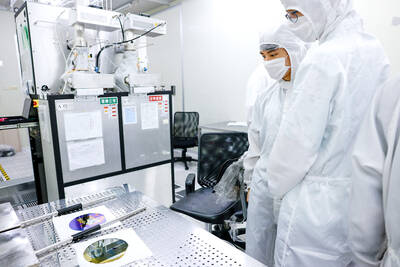
The low voter turnout for the referendum on Aug. 23 shows that many Taiwanese are apathetic about nuclear energy, but there are long-term energy stakes involved that the public needs to grasp Taiwan faces an energy trilemma: soaring AI-driven demand, pressure to cut carbon and reliance on fragile fuel imports. But the nuclear referendum on Aug. 23 showed how little this registered with voters, many of whom neither see the long game nor grasp the stakes. Volunteer referendum worker Vivian Chen (陳薇安) put it bluntly: “I’ve seen many people asking what they’re voting for when they arrive to vote. They cast their vote without even doing any research.” Imagine Taiwanese voters invited to a poker table. The bet looked simple — yes or no — yet most never showed. More than two-thirds of those
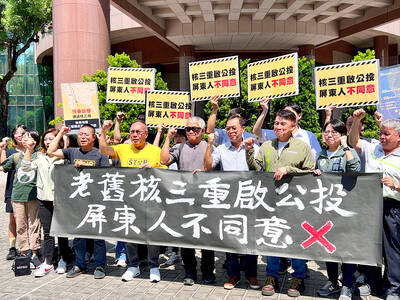
In the run-up to the referendum on re-opening Pingtung County’s Ma-anshan Nuclear Power Plant last month, the media inundated us with explainers. A favorite factoid of the international media, endlessly recycled, was that Taiwan has no energy reserves for a blockade, thus necessitating re-opening the nuclear plants. As presented by the Chinese-language CommonWealth Magazine, it runs: “According to the US Department of Commerce International Trade Administration, 97.73 percent of Taiwan’s energy is imported, and estimates are that Taiwan has only 11 days of reserves available in the event of a blockade.” This factoid is not an outright lie — that
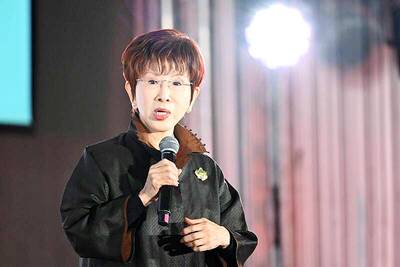
Former Chinese Nationalist Party (KMT) chairwoman Hung Hsiu-chu’s (洪秀柱) attendance at the Chinese Communist Party’s (CPP) “Chinese People’s War of Resistance Against Japanese Aggression and the World Anti-Fascist War” parade in Beijing is infuriating, embarrassing and insulting to nearly everyone in Taiwan, and Taiwan’s friends and allies. She is also ripping off bandages and pouring salt into old wounds. In the process she managed to tie both the KMT and the Democratic Progressive Party (DPP) into uncomfortable knots. The KMT continues to honor their heroic fighters, who defended China against the invading Japanese Empire, which inflicted unimaginable horrors on the
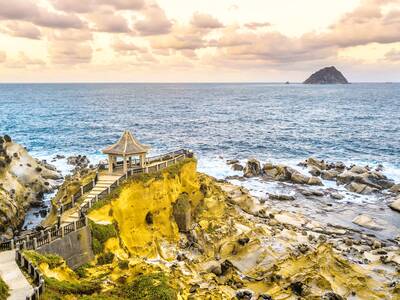
Sitting on a bus bound for Heping Island (和平島), at the start of my first visit to Keelung in years, I was hell-bent on visiting a place of considerable historical interest, even though I knew that it wasn’t officially open to the public. In 2011, archaeologists working in the densely populated southern half of the island unearthed the foundations of the Convento de Todos los Santos (Convent of All Saints, 諸聖教堂), a Catholic house of worship established during Spain’s 1624-1642 occupation of northern Taiwan. I’d heard about its rediscovery a while ago, but it wasn’t until I read a scholarly